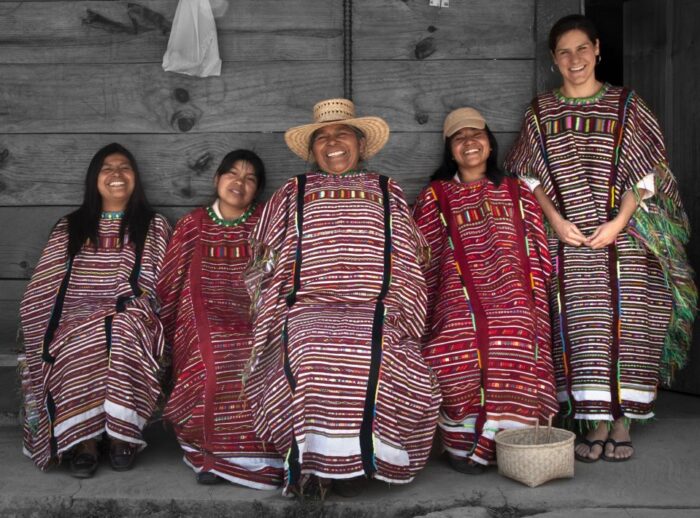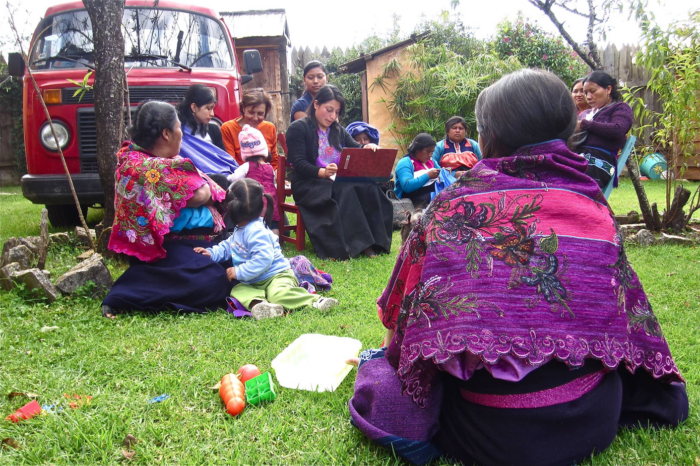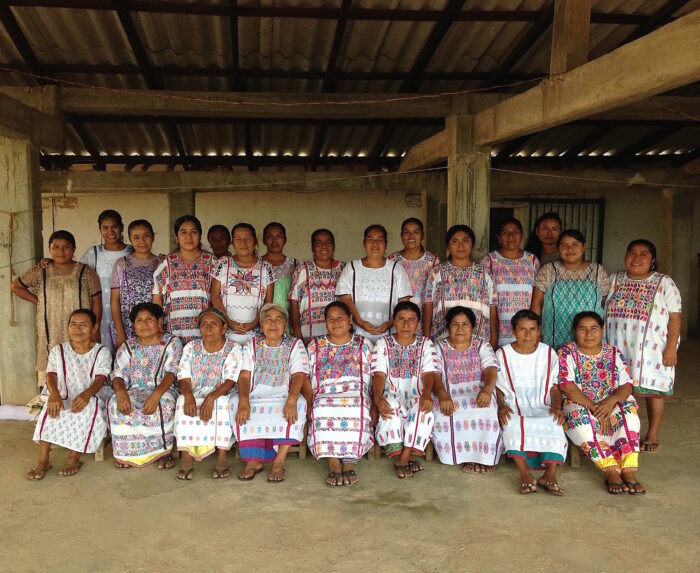From Oaxaca with love
By Ana Paula Fuentes
Translation by Nathalia Orquera
27 years ago I came to Oaxaca for the first time on a family trip and since then I fell in love with this place. It was on this trip that I discovered the wealth of textiles in Oaxaca, and above all, I began to understand the reason behind so much variety. After studying Textile Design at the Universidad Iberoamericana in Mexico City and working for 7 years in Barcelona and in Mexico City as knit wear fashion designer, I decided to leave everything behind and settle permanently in this wonderful city where I live today.
When I arrived in Oaxaca I did not know exactly what I wanted to do, the only thing I knew was that I wanted to support the artisans, learn more about the indigenous world and explore the Oaxacan culture. And as I settled in the city, I had the opportunity to participate in the creation of the Studio 11011, an experimental study, where I collaborated with several plastic artists in exhibitions, performances, installations and concerts, and to create “Artesana”, a craft selling company, where I had direct contact with artisans from different Oaxacan communities, to help them develop new products and sale them throughout Mexico.

The best opportunity of my life came when the Alfredo Harp Helú Foundation invited me to start the Textile Museum of Oaxaca (MTO) project. I started working with the textile collection catalogs the museum already had, but as I engage in it, I became thoroughly involved with the project that I became the Director. It took us two years to design the museum, from restoring the building and creating the new team, to the design of what would be the heart of the project: its philosophy and its motivation to exist. From the beginning, we designed everything to be a living museum that told stories through its textiles, where we could give life to them through encounters between people of different disciplines and cultures. It would become a laboratory to experiment and create new textiles and new ways to understand, value, innovate, and preserve them through social exchange, and finally an inclusive space so that the community could embrace and make part of their lives.
During the 4 years that I was directing the MTO I realized that although there was a lot of potential within the artisans, there were missing opportunities for product innovation. They needed to grow both personally and economically, without sacrificing the value of their crafts, meaning, the knowledge, the context, the worldview and the ways of life that make possible the textiles they create.
That is why after 4 years of directing the Textile Museum of Oaxaca, I decided to leave this position and undertake a trip to India to meet and work with weaver organizations and learn new ways of dealing with textiles and understand design. Inspired by my experience in India and the years in the MTO, I returned to Mexico to start a new path: explore extensively and more comprehensively the potential of collaborations and exchanges between artisans and designers. That’s how I started to collaborate with the Mexican civil association, El Camino de los Altos, made up of 130 Maya weavers from Altos de Chiapas and a collective of 8 French designers. I oversaw communication, promotion, marketing and liaisons between artisans and clients. I also worked with the cooperative La Flor de Xochistlahuaca, formed by 35 Amuzgas weavers, and with Las Sanjuaneras cooperative, formed by 19 Mixtec weavers; both projects funded by the Rubin Foundation.
The mission was to strengthen the groups and to provide tools so the artisans could develop a new collection of textiles rooted in their tradition and that could autonomously carry out the promotion and marketing of their own products. All these is done, with the objective of transforming the two artisan groups into sustainable projects.

Currently, I direct the CADA (Trade through Design and Crafts) Foundation, whose mission is to provide the essential tools for artisans to rekindle the traditional techniques present in their clothing, so that through this knowledge and by strengthening their cultural heritage and “know-how with their hands” can achieve economic self-sufficiency.
We use social design as an approach to our work and we try not only to understand the process as a cultural heritage, but also create optimal trade routes in order to introduce production and its process to the global economy. As part of CADA’s mission, we document all these processes and the stories behind the products that we develop during joint research projects, and dissemination of these experiences and methodology of the work through reflection and debate seminars with cultural managers and future designers that have an interest in the social sphere, thus encouraging mutually beneficial collaborations.

After all these years of study, learning, and experience in the world of fashion, design and crafts, I am convinced that designers have a crucial role to positively transform the world in which we live in. We can’t let the contexts in which artisans live, the way they view the world and how they relate to it in equilibrium, quickly disappear and dissolve in the colonizing narrative of progress. I do not think as designers we should empower craftsmanship, since craftsmanship is already powerful; rather I think that as designers, we must create a space to understand craftsmanship and create spaces to listen to the artisans. Eventually, artisans will have the necessary tools to face the adversities that globalization brings, and will be able to keep alive their marvelous cultural patrimony heritage that are handmade textiles.





